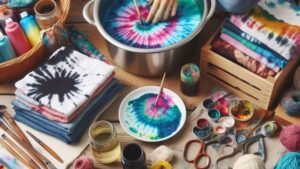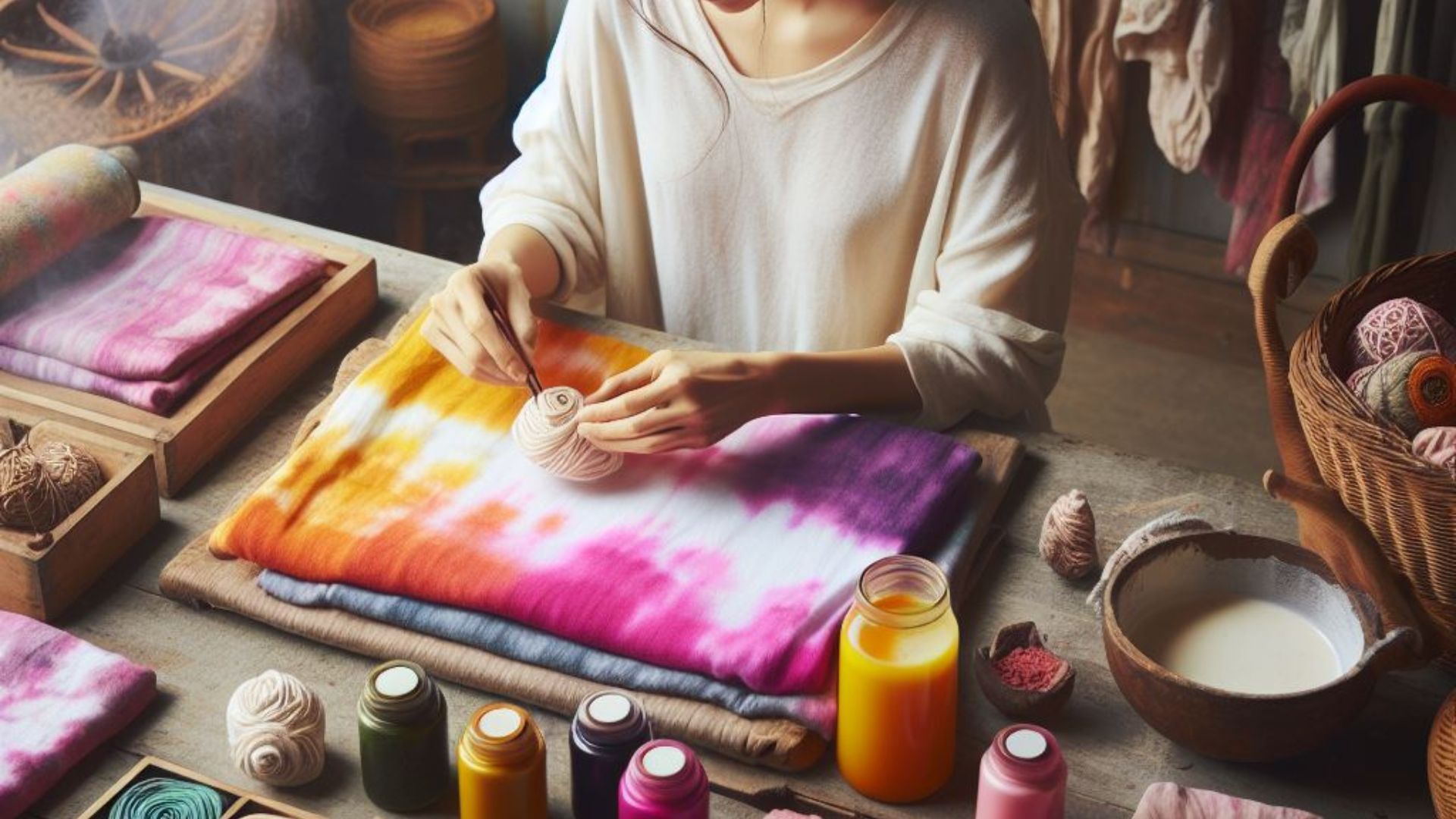Setting time, the duration required for a fabric to retain certain alterations or treatments, varies significantly across different fabric types. The setting time primarily depends on the fabric’s composition, weave, and intended application. Let’s delve deeper into how various fabric types differ in their setting times:
Natural Fabrics
Cotton
Cotton, being highly absorbent, can retain alterations for longer periods. When dyed or treated, cotton often requires a more extended setting time to ensure the color or treatment properly adheres to the fibers. The porous nature of cotton allows it to hold onto dyes or finishes, necessitating a longer setting period for optimal results.
Silk
Silk, known for its luxurious feel and luster, has a moderate setting time. The setting time for silk can vary based on its weave and thickness. Finer silks might require shorter setting periods compared to heavier weaves to preserve the fabric’s sheen and integrity.
Wool
Wool, a natural insulator, generally demands a more controlled setting time due to its delicate nature. When undergoing treatments or dyeing, wool often requires a careful balance of time and temperature to prevent damage or distortion.
Synthetic Fabrics
Polyester
Polyester, a synthetic fabric, typically has a relatively shorter setting time compared to natural fabrics. Its synthetic composition allows for quicker absorption of dyes or finishes, leading to faster setting times.
Nylon
Similar to polyester, nylon’s synthetic properties result in a shorter setting time. However, specific treatments or alterations might demand varying durations depending on the intended outcome.
Factors Influencing Setting Time
Dye Type and Treatment
Different dyes or treatments can impact setting times. Reactive dyes, for instance, might require longer setting periods to bond with fibers, while other types like acid dyes might set faster.
Fabric Weave and Thickness
The weave and thickness of the fabric significantly influence the setting time. Finer weaves or thinner fabrics may require shorter setting periods compared to denser weaves or thicker fabrics.

Temperature and Chemical Reactions
The application of heat or specific chemicals can expedite or extend setting times. Elevated temperatures or certain chemical reactions can influence how quickly a fabric sets.
So,…
The setting time for fabrics varies based on their composition, weave, and the specific treatment or alteration being applied. Understanding these differences is crucial for achieving desired results when dyeing, finishing, or treating fabrics. Adhering to recommended setting times ensures the longevity and quality of the fabric’s appearance and properties.
Setting times are integral to the textile industry, guiding professionals in managing the treatment process effectively. Acknowledging and respecting these differences, individuals working with fabrics optimize outcomes and maintain the integrity of various fabric types.
For further information on fabric treatments and setting times, explore these resources:
- Textile Industry: Understanding Fabric Finishing – Textile World offers insights into fabric treatments and finishing processes.
- Dyeing Techniques and Applications – Textile Learner provides comprehensive information on dyeing techniques and their impact on different fabric types.
- Fabric Dyeing: Methods and Considerations – Fibre2Fashion offers insights into fabric dyeing methods and considerations for various fabric compositions.
Understanding the nuances of setting times across fabric types empowers individuals to make informed decisions in the treatment and maintenance of textiles, ensuring longevity and quality in the final products.
Optimizing Setting Times for Fabric Treatments
Understanding the intricate details of setting times for various fabric types is just the beginning. To achieve optimal results in fabric treatments, it’s crucial to consider some essential factors and best practices:
1. Testing and Evaluation
Before undertaking a large-scale treatment or dyeing process, conduct small-scale tests. This allows for assessing the specific fabric’s response to treatments and determining the ideal setting time.
2. Follow Manufacturer Recommendations
Manufacturers often provide guidelines regarding setting times for specific treatments or dyes. Adhering to these recommendations ensures compatibility and prevents damage to the fabric.
3. Temperature Control
Maintain consistent temperatures during treatments. Variances in temperature can impact setting times and affect the final appearance and quality of the fabric.
4. Observation and Monitoring
Regularly monitor fabrics during the setting process. Visual cues like color absorption or texture changes can indicate whether the setting time is adequate or requires adjustment.
5. Consultation and Expertise
Seek advice from textile professionals or experts, especially when dealing with unfamiliar fabrics or treatments. Their experience can provide valuable insights into setting times and treatment methods.
6. Adaptation to Fabric Variations
Recognize that within each fabric type, variations exist. Factors like fiber blends or fabric finishes may influence setting times, requiring adjustments in treatment durations.
7. Record Keeping
Maintain records of treatments and their respective setting times. This documentation aids in refining processes and achieving consistent results in future treatments.
Conclusion: Achieving Fabric Treatment Excellence
Mastering the art of fabric treatments involves a delicate balance of science, technique, and understanding of fabric properties. Comprehending the diverse setting times across fabric types and implementing best practices, professionals and enthusiasts alike achieve remarkable outcomes in fabric dyeing, finishing, and treatments.
The journey toward fabric treatment excellence involves continuous learning, experimentation, and a keen eye for detail. Embracing the nuances of setting times empowers individuals to elevate the quality and durability of textiles, creating products that stand the test of time.
As you venture into the realm of fabric treatments, remember that mastering setting times is a skill honed through experience and a deep understanding of fabric behavior. Implementing the insights shared here and continuously exploring new techniques, you’re poised to unlock the full potential of fabric treatments.
Comparison tabular
Here’s a comparison table highlighting the differences in setting times across various fabric types:
| Fabric Type | Setting Time | Factors Influencing Setting Time |
|---|---|---|
| Cotton | Longer | High absorbency, porous nature, and fiber composition |
| Silk | Moderate | Weave, thickness, and silk quality |
| Wool | Controlled | Delicate nature, fiber structure, and treatment specifics |
| Polyester | Shorter | Synthetic composition and dye absorption speed |
| Nylon | Shorter | Synthetic properties and treatment considerations |
Factors Influencing Setting Time:
- Fabric Composition: Natural fabrics like cotton, silk, and wool have unique properties influencing their setting times, such as absorbency and fiber structure.
- Weave and Thickness: The weave and thickness of the fabric impact setting times, with finer weaves or thinner fabrics generally requiring shorter periods.
- Fiber Quality: The quality of silk or wool and the presence of blends can alter the setting time.
- Synthetic Properties: Synthetic fabrics like polyester and nylon absorb dyes faster, resulting in shorter setting times.
This table provides a concise overview of how different fabric types vary in their setting times and the primary factors affecting these durations. Understanding these differences is pivotal for successful fabric treatments.
Wrapping up
In the world of fabric treatments, understanding the unique setting times across various fabric types is akin to unlocking a treasure trove of possibilities. Each fabric, with its distinct composition and properties, demands a specific approach to achieve the desired outcome.
Mastering setting times involves an amalgamation of science, artistry, and a deep appreciation for the intricacies of textiles. By recognizing the nuances of cotton’s absorbency, silk’s elegance, wool’s resilience, polyester’s efficiency, and nylon’s versatility, one can navigate the fabric treatment landscape with finesse.
Remember, whether you’re a seasoned professional or an enthusiastic novice, the key lies in experimentation, meticulous observation, and an unwavering curiosity to explore new techniques.
As you embark on your fabric treatment journey, may the understanding of setting times be your guiding light, leading you to create marvels that not only captivate the eyes but stand as testaments to your expertise and passion in the realm of textiles.
Cheers to unraveling the mysteries of fabric setting times and weaving wonders in every treatment you undertake.

For over a decade, I’ve been Mike, an artist, crafter, and designer deeply immersed in the Croc world. I thrive on crafting unique, size-inclusive patterns, fostering creativity, and sharing them on ktforum.com. My designs aim to ignite your creative spark and delight you, ensuring clarity and ease of use through rigorous testing. Join me in expressing your creative flair and showcasing your craft with joy.
Related Posts
- Should you consider the fabric's reaction to dyes for setting time
Considering a fabric's reaction to dyes is crucial when it comes to setting time. Let's…
- Should I take into account the fabric's pre-treatment for setting time
Absolutely, considering the pre-treatment of fabric before setting time is crucial. Whether you're a DIY…
- To Set or Not to Set: Understanding the Tie-Dye Setting Process
Tie-dyeing is a fantastic way to infuse vibrant colors and creative designs into fabrics. Yet,…
- Understanding the Impact of Sunlight on Setting Tie-Dye
Tie-dyeing is a vibrant and creative way to add a burst of color to fabrics.…

